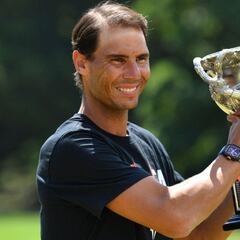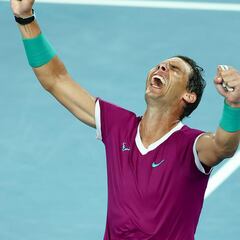Nadal wins Australian Open: AS editor Vicente Jiménez on the Spaniard's 21st Grand Slam title
AS editor-in-chief Vicente Jiménez reacts to Rafa Nadal's victory in the Australian Open men's singles final - a win that brought the Spaniard a record 21st Grand Slam title.
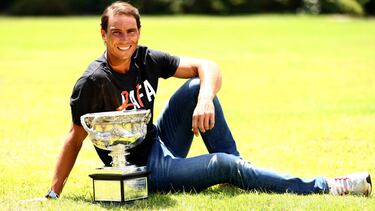
As an EL PAÍS journalist in 1993, I had the immense privilege of covering Sergi Bruguera’s final win at Roland Garros, the first of his two triumphs at the French Open. It was against the United States’ Jim Courier, who had been men’s world number one since 1992. Those were years in which, while Arantxa Sánchez Vicario had won her first Grand Slam title in Paris in 1989, men’s tennis was in the doldrums in Spain. The Americans were dominant (Pete Sampras, Andre Agassi, Courier…), as were the likes of Ivan Lendl, Mats Wilander, Stefan Edberg and Boris Becker. Bruguera’s win over Courier was very much unexpected. Since Andrés Gimeno in 1972, no other Spaniard had had his name etched on the Coupe des Mousquetaires. Indeed, Spain’s only men’s Grand Slam title winner had been Manolo Orantes, at the 1975 US Open. Skinny and not all that graceful, but with a tremendous fire in his belly, Bruguera upset the odds and opened the way to Paris glory for Carlos Moyá, Albert Costa, Juan Carlos Ferrero, and… Rafa Nadal, who bit into his first French Open trophy in 2005 (his most recent, his 13th, was won in 2020).
Courier was clearly thinking: how does Nadal do it...?
As fate would have it, Courier, now a few years older and minus his trademark baseball cap, had a front-row seat, as the Australian Open’s official interviewer, to Spanish tennis’ greatest achievement: Nadal’s 21st Grand Slam win, a title that makes him the most successful men’s player of all time. As Nadal brought tears to the eyes of millions of Spaniards with an as ever generous victory speech, offering words of thanks to his opponent, the crowd and the tournament organisers, I couldn’t help but notice the expression on Courier’s face. He was half-hidden by Nadal and his purple shirt, but it was still clear to see: his face was that of a man who’d seen something unique, inexplicable, illogical. A miracle: something Nadal has become rather a specialist at. You could see that Courier was thinking: How does he do what he does? How is it possible for him to win 21 Grand Slams (90 ATP titles) the way he does? Because, while it’s no secret he’s a winner, it’s a mystery how he does it at 35, with a broken bone in his foot, having been on crutches and contemplating retirement just weeks earlier.
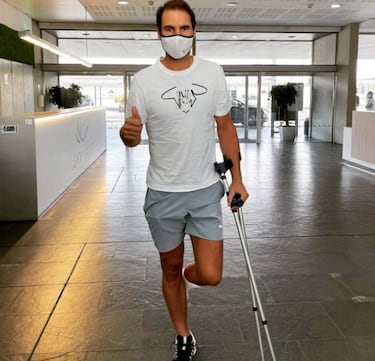
Stats won't help you explain the secret to Nadal's success
Don’t look to the stats for the answers. You won’t find them. Against Daniil Medvedev, the number two in the world and the leader of a new wave of wonderful young players, Nadal was second-best in almost every metric: first-serve percentage, return points won, aces… He only led the way in double faults and break points won. How can a guy who has managed only three aces, compared to his opponent’s 23, lift the trophy in a Grand Slam final? Perhaps because the key to what Nadal is all about is what you can’t see.
Related stories
Nadal wins every match before taking to the court. Every one. His opponents know there’s no-one else like him on the circuit, and they go out there a set down. A set that isn’t on the scoreboard, but in their head. Everyone who comes up against the Spaniard will have to summon everything they’ve got in their locker, because he plays every point as iF it were his last. Every shot, every run, every shout Nadal produces is that of a workhorse that simply keeps on keeping on. He has turned that into an art form. Nadal doesn’t have any weaknesses, because he doesn’t live off virtuosity. His repertoire is the box of tools he carries down to the coal face. And he strikes gold. His opponents try to break him, but it’s impossible, and they can only admire him for it. They’d love to possess his chief weapon, his hitherto unparalleled mental fortitude, but they succumb to it. It’s been built since he was a kid, thanks to training methods rich in values and principles (gracias, Toni Nadal). As a result, victory isn’t the end for Nadal, but rather the means with which to travel the world as the unique sportsman, superb tennis player and, above all, great human being that he is.
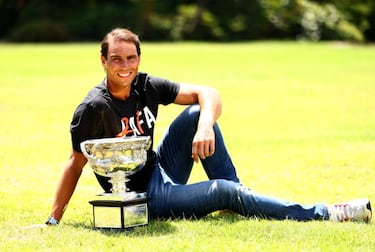
“Real courage is when you know you’re licked before you begin, but you begin anyway and you see it through no matter what. Before I can live with other folks, I’ve got to live with myself. The one thing that doesn’t abide by majority rule is a person’s conscience. Remember it’s a sin to kill a mockingbird.” That’s just one of many reflections that Atticus Finch, one of the main characters in Harper Lee’s great novel To Kill A Mockingbird, offers his children in his efforts to raise them as good people amid a backdrop of racism and economic depression. I don’t know if Nadal has read the book, but I’m almost certain that his uncle Toni, the man who shaped him and was by his side during the crucial years of his career, has. Many times.

